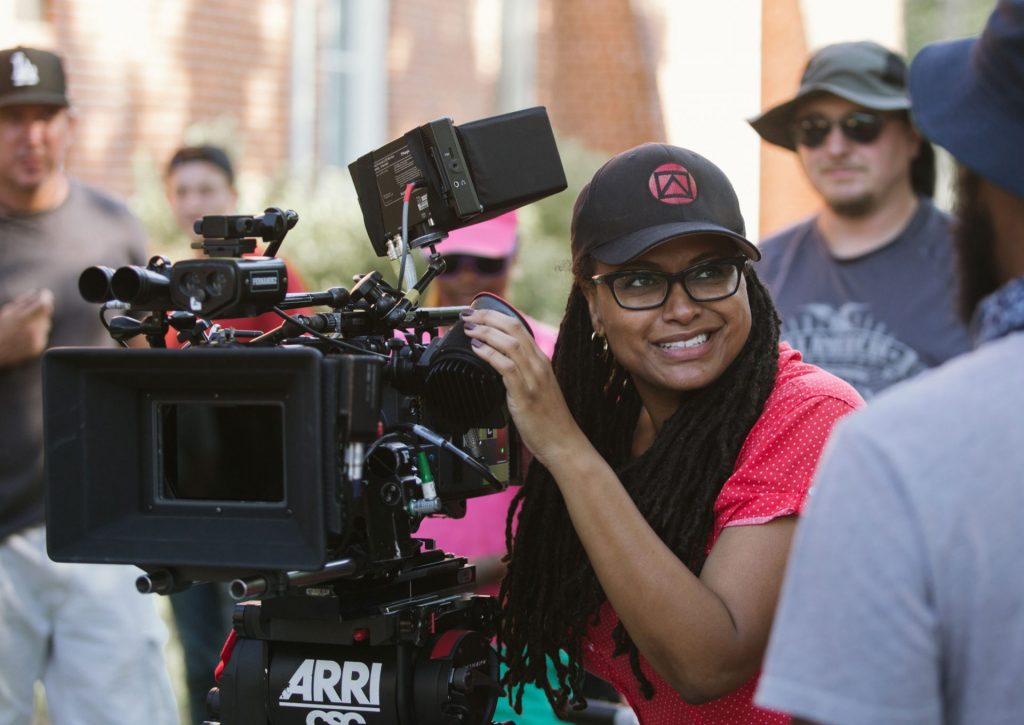Women in Film: Where They Are and How Far They’ve Come

by Renee Sutton
International Women’s Day is a global celebration of the social, cultural, and economic achievements of women around the world, and an opportunity to celebrate and reflect on some of the most badass women in film, both in history and today.
The role of women in the film industry has changed dramatically since the early days of Hollywood, when most women on set were on-screen bombshells or at least deemed marketable by the big studios. While film is statistically still a male-dominated industry, more and more women are moving into key creative positions and making highly acclaimed and celebrated films in both the independent and studio world.
Despite the adversity, there have always been women who persevered and shone in the film industry. Even during the early decades of Hollywood’s first century, there was Dorothy Arzner, the only working female director in America in the late 20’s and 30’s. She made 3 silent movies and 14 ‘talkies’ during her 15-year career as a director, and was the first female member of the Directors Guild of America.
The modern film industry has many more women working behind the scenes, but still at a ratio of five men to every one woman, according to the New York Film Academy. In the entire 89-year history of the Academy Awards, only four women have been nominated for Best Director; Lina Wertmüller for Seven Beauties (1975) in 1976, Jane Campion for The Piano in 1993, Sofia Coppola for Lost in Translation in 2003, and Kathryn Bigelow who was the first and only woman to win Best Director for The Hurt Locker in 2008.
Originally from California, Kathryn Bigelow began her creative career as an accomplished painter before studying film theory. She started by making short films, and had early success directing features with Point Break in 1991 and, more recently, the acclaimed Zero Dark Thirty in 2012. Bigelow was the first woman to win a BAFTA award for Best Director and to win the Directors Guild of America award for directing a feature.
While less than 30 percent of all key creative positions (directors, writers, producers cinematographers, and editors) are held by women today, according to a 2013 study by Sundance Institute and Women in Film, the number of female documentary directors and producers is drastically higher now than it was in the past. Women are much more prominent in the production of documentaries than in that of narrative films. Women make up nearly 50% of documentary directors and producers but less than a quarter of narrative feature producers and directors.
Even though their numbers comprise a lower percentage of filmmakers in the industry, female filmmakers are constantly breaking new ground. American director, screenwriter and distributer Ava DuVernay began working in film publicity to market movies to African American audiences in the 90’s. The documentary This is the Life (2008) was her directorial debut. Her second narrative film, Middle of Nowhere (2012), won DuVernay the Best Director Award in 2012, making her the first female African American to receive this award. In 2014, she was also the first female black director to be nominated for a Golden Globe and an Academy Award for her film Selma (2014).
Looking a little closer to home, Canada also has many inspiring and successful female directors. Alanis Obomsawin has been directing films since 1971 and has nearly 50 directing credits with the NFB. While originally born in New Hampshire on Abenaki Territory, Obomsawin was primarily raised in Quebec. Before her film career, she toured as a singer/song writer and activist, eventually moving on to make films that address the struggles and perspectives of aboriginal peoples living in Canada, including 270 Years of Resistance, her best-known film from 1993.
Canadian actress Sarah Polly also shifted into directing films and is leading a very successful career as a director. Her 2006 feature film debut, Away from Her, was nominated for an Academy Award for Best Adapted Screenplay and won multiple Genie awards, including the first female to receive the best achievement in direction award. Her films Take This Waltz (2011) and Stories We Tell (2012) were both named one of Canada’s top ten features of the year by the Toronto International Film Festival.
Vancouver-based Julia Ivanova is a passionate director, editor and cinematographer committed to making documentaries that break individual and social perceptions. She has directed and edited multiple full-length feature documentaries, including Family Portrait in Black and White, which won best Canadian feature at Hot Docs in 2011, and Limit is the Sky (2016), which premiered at the Calgary International Film Festival 2016 and will be screening in Vancouver at DOXA this year.
You can celebrate women in film at the 2017 Vancouver International Women in Film festival from March 8-12 at the VIFF Vancity Theatre, or you can check out any of the films on this IMDB list of 200 films directed by a woman.
Renee is a Vancouver-based freelance videographer and editor. Since graduating from InFocus Film School, Renee spends most of her time editing video projects and creating social content for online platforms, but she also enjoys creating environmentally-aware short documentaries and travel videos.






Leave a Reply
Want to join the discussion?Feel free to contribute!